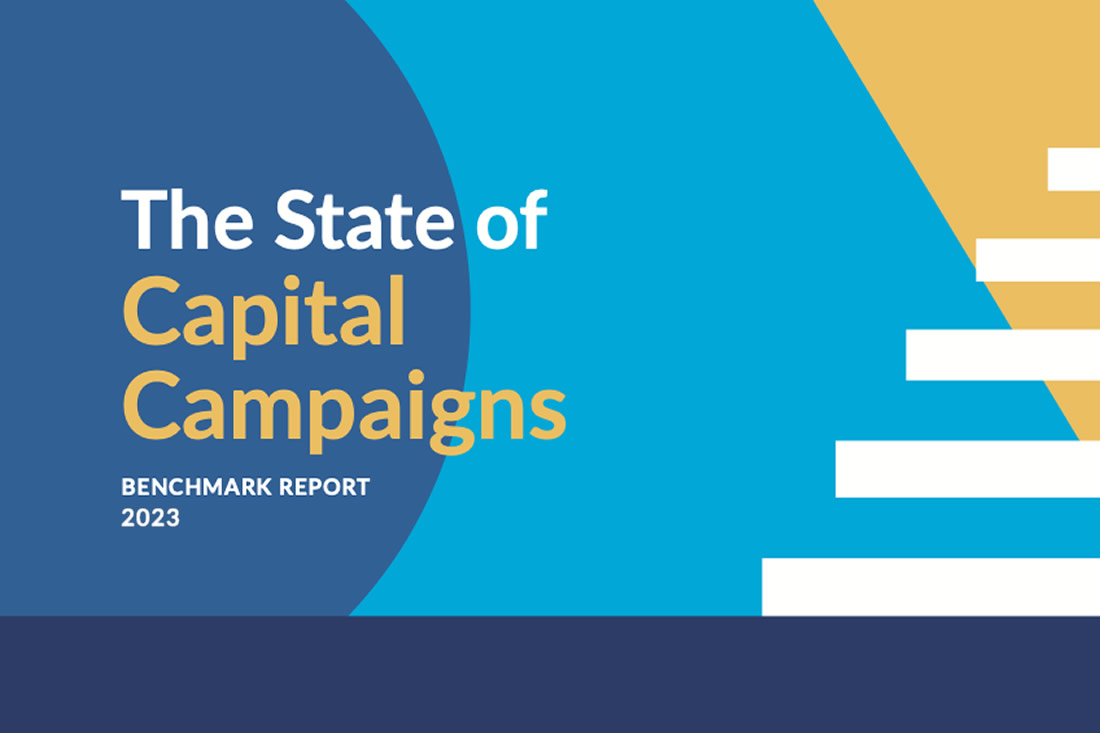New Research: The State of Capital Campaigns 2023

Capital campaigns play a pivotal role in enabling nonprofits to secure the financial resources needed for major projects, infrastructure development, and long-term sustainability.
2023 Benchmark Research: The State of Capital Campaigns
Formal research into how nonprofits plan and conduct capital campaigns is essential to enhance the effectiveness and impact of these critical fundraising efforts.
That’s why we recently surveyed nearly 300 nonprofits in the US and Canada, ranging from those just thinking about a future campaign, to those currently in a campaign, to those who have completed a campaign in the last two years.
Their insights have been collected in the first-ever Capital Campaign Benchmark Report.
This study will help the nonprofit sector move beyond anecdotal evidence and delve into empirical data, yielding a deeper understanding of what goes into a successful capital campaign.
Capital Campaigns in 2023: Key Research Findings
The prospect of a capital campaign generates a number of common questions, fears, and myths amongst frontline staff, leadership, and board members:
- How often do capital campaigns end in failure?
- Will a capital campaign cannibalize our annual fund?
- Should we even bother conducting a feasibility study?
- Are we too small of an organization to do a capital campaign?
- We don’t have a wealthy board; can we still hit our goal?
Our team of advisors have spent their decades-spanning careers attempting to alleviate many of these unfounded fears. Now, we have the hard data to back up those many years of experience.
Amongst the many findings uncovered in our study, a few quickly floated to the surface as being potentially game-changing for the sector.
1. Capital Campaigns are overwhelmingly successful.
We found that 94% of respondents in our study who recently completed a campaign consider that campaign to have been a success. In fact, the average percentage of goal raised was 108% (with the highest reported goal achievement being 170%, and the lowest 75%).
2. Annual funds stay the same or increase during and after campaigns.
One of the biggest fears we encounter in talking with organizations who are considering a campaign is whether or not it will cannibalize their annual fund. We found that 79% of respondents in our study reported that their annual funds either increased or stayed the same during the campaign.
3. Conducting a feasibility study is beneficial for fundraising and donor relationships.
Amongst organizations that conducted a feasibility study, we discovered that 94% strengthened major donor relationships, and ended up raising 115% of their original campaign goal.
Conversely, amongst organizations that did not conduct a feasibility study, only 66% reported a strengthening of major donor relationships, and achieved only 101% of their campaign goal.
4. A high-powered / big-money board is not necessary for campaign success.
We found that the average percentage of the campaign goal raised from board members was only 14%. Although it’s certainly helpful when a board contributes a significant portion of the campaign goal, it’s not imperative for campaign success.
5. Small shops ($1MM or less in annual revenue) have successful campaigns, too.
There was very little difference in reported success rates of capital campaigns amongst organizations raising less than $1MM annually. In fact, small shops reported higher levels of major donor relationship building and fundraising system improvement than the rest of the field.
Have Courage to Proceed with Your Capital Campaign
While capital campaigns are as unique as the organizations that conduct them, there is one universal truth that all fundraisers should acknowledge when considering a campaign of their own:
“With courage to proceed, you are likely to succeed.”
Capital campaigns by and large are successful, even during the most trying years in recent memory.
Don’t Let Negative World Events Derail Your Campaign
The nonprofit sector, time and time again, has weathered external world events. Whether it’s 2001, 2008, or 2020, the donor community in general responds to trying times with incredible generosity. If you’re delaying because you think it’s just not a good time to raise money, you’re in the minority.
Furthermore, it is a myth that capital campaigns cannibalize the annual fund. To the contrary, campaigns stimulate fundraising and donor relationships leading to better overall fundraising results.
A Capital Campaign Can Propel Your Nonprofit’s Growth
Finally, small organizations can successfully use capital campaigns to catapult to the next level of growth and maturity. They are an excellent opportunity to build capacity for fundraising, internal systems and infrastructure.
In its inaugural year, this research validated our preconceived notions of the tenets of a successful capital campaign, while squashing myths that are pervasive amongst prospective capital campaigners. Our goal is to continue conducting this research to build the dataset, and measure trends over time.
We hope this information will help you level-set expectations within your own organization, and give you the confidence to move forward with your ambitious vision.
Free Download: The State of Capital Campaigns
This groundbreaking research into how capital campaigns are planned and executed by North American nonprofits sheds light on many of the common questions and myths surrounding campaigns.



Leave a Comment